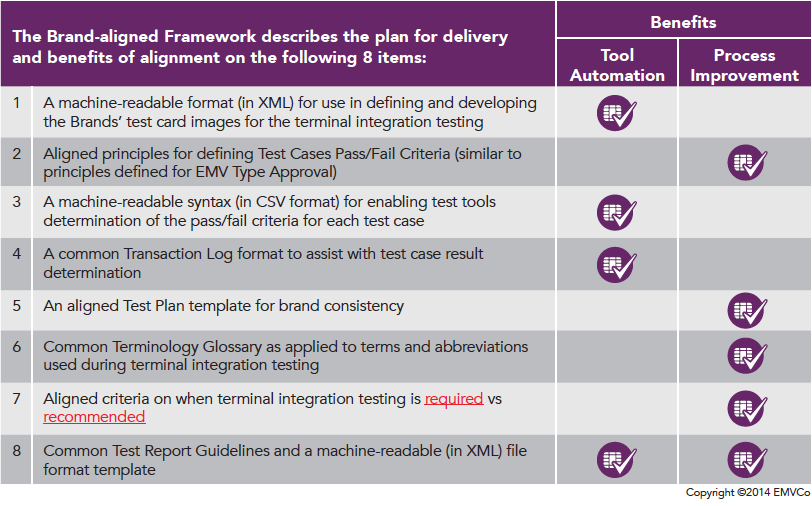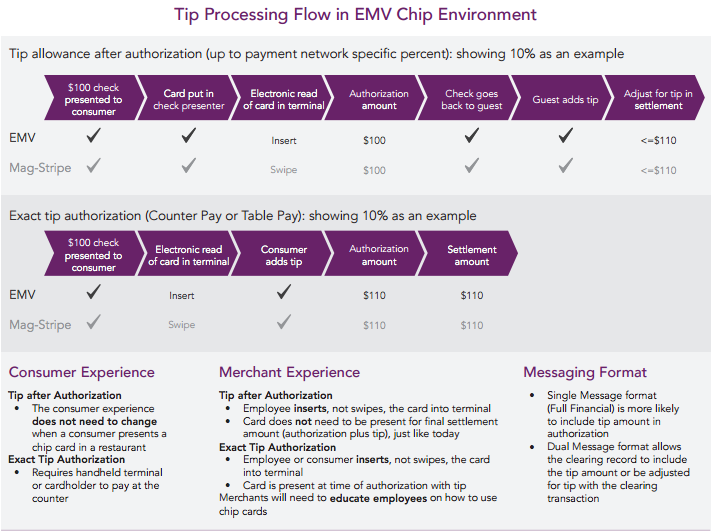EMV News Quarterly – March 2016

To download or view this as a PDF, click here.
DIRECTOR’S CORNER
Randy Vanderhoof
 The Time Is Now
The Time Is Now
We are rapidly approaching the critical stage for the EMV migration in the United States, when things are beginning to “normalize” around the implementation phase of chip security. The feelings of angst and urgency leading up to the October fraud liability shift date, followed by the frenzied six weeks of the holiday shopping season, have now transitioned into the new phase of seeking operational efficiency.
Now is not the time to take the foot off the gas when it comes to training, testing, and tweaking systems to perform better. Rather, it’s time to make adjustments and corrections that will continue to educate consumers about using chip cards and improve the shopping experience as more people begin using chip-enabled cards at chip-enabled retailers.
It’s time for smaller merchants, who either chose to sit out the migration or who were left out by their suppliers, to get EMV equipped before the potential of fraud losses increases as fraudsters move to non-EMV-enabled merchants.
This is a time for all stakeholders to finish the work we have all collectively worked towards. The complexities of the U.S. market are still very evident for some merchants, acquirers and issuers who haven’t completed their migration.
The EMV Migration Forum Steering Committee, working committee leadership, and support staff are not taking this time for granted. As we meet this month in La Jolla, CA, we are keeping our focus on the present needs of the market and considering what the Forum can do for the payments industry in the next months and years ahead. I invite you to join us and add your input so that we can keep the U.S. market talking and moving forward together.
Randy Vanderhoof
Director, EMV Migration Forum
IN THE SPOTLIGHT
Testing and Certification Working Committee
In this issue of the March EMV News Quarterly, we take a look at the Testing and Certi cation Working Committee, which is chaired by Randy Burnette of Verifone and Cindy Kohler of Visa. The Committee’s goal is to discuss the challenges with EMV certification and define approaches for achieving certification to meet the payment brand milestones for fraud liability shift. Areas for focus include: education on the testing and certification that is required for different industry stakeholders; evaluation of current processes to define approaches for streamlining testing and certification.
What is the mission of the Testing and Certification Working Committee?
The mission of the Testing and Certification Working Committee was to focus on communication of testing requirements, education of the process and options available for different market segments in the U.S.
What were some of the meaningful projects and resources the committee has produced?
Over the last three years, the Testing and Certification Working Committee has provided multiple trainings, testing materials, webinars, and white papers and partnered with other industry organizations (Payments Security Task Force and EMVCo Terminal Integration Task Force) to streamline testing requirements across payment networks, both for the U.S. and globally. Collectively, implementing these efforts will streamline and improve the current terminal integration testing processes globally while maintaining a balance for when to test for a stable, frictionless payment environment and acceptance experience both domestically and globally.
Can you describe some of the committee’s key initiatives?
- Hosted EMV training for retail value-added resellers (VARs), independent software vendors (ISVs) and independent service organizations (ISOs) in September 2014, with recording available at http://www.emv-connection.com/emv-workshop-for-vars-isvs-and-isos/.
- Launched testing materials and resources, available on the EMV Migration Forum Knowledge Center website.
- Developed the “EMV Testing and Certification White Paper: Current U.S. Payment Brand Requirements for the Acquiring Community” in July 2013. An updated white paper is scheduled to be published this month.
- Collaborated with the Payments Security Task Force and PCI Security Standards Council to develop educational content for the U.S. EMV VAR Qualification Program.
- Formed the Acquirer Subcommittee which developed a “Framework Document” that identified opportunities to improve acceptance testing processes for migration to chip.
In a parallel effort, the EMVCo Terminal Integration Task Force (TITF) was established in September 2013 to also review varied acquirer processes globally, identify areas to align and determine synergies across the payment networks’ testing processes for the integration of EMV contact and contactless acceptance devices into their payment environments.
Working jointly with the Testing and Certification Working Committee’s Acquirer Subcommittee, eight deliverables were identified associated with network-defined EMV terminal testing requirements for tool automation and alignment of testing processes across all of the payment networks.
The EMVCo TITF published the EMVCo Brand-aligned Terminal Integration Testing Framework – Process Enhancement in November 2014. The document is available on http://www.emvco.com.
Industry adoption globally is currently scheduled to be complete by April 2016 and includes American Express, China UnionPay, Discover, JCB, MasterCard, and Visa.
The Working Committee continues to actively support the Forum’s initiatives, providing a focused resource on testing and certification requirements.
Table 1 outlines the benefits of the eight deliverables:
Table 1. Benefits of the EMVCo Brand-aligned Terminal Integration Testing Framework
The key benefits of these initiatives for the U.S. market are:
- Quicker development and availability of all-payment-network qualified test tools to meet market needs.
- Improved credibility and availability of all-payment-network accredited service providers to assist merchants and acquirers with their testing requirements.
- Provision of more robust testing analysis by test tools, reducing test debugging and analysis timelines and allowing for quicker deployment to market.
- Standardization of test tool readiness across all payment networks, allowing for streamlined processes.
Interested in joining a Working Committee? Contact Mike Strock, [email protected].
New EMV Resources
New educational resources published for Forum members and the payments industry are available from the EMV Migration Forum on the EMV Connection and GoChipCard.com web sites.
- The EMV Migration Forum released the white paper, PIN Bypass for the U.S. Market, for public distribution after incorporating edits that responded to member comments. The white paper was developed to provide an educational resource on the EMV function of PIN Entry Bypass, how it can be implemented in the U.S. market, other actions that may process transactions allowing selection of cardholder verification method, and how those actions differ from PIN Entry Bypass
- The Forum is continuing the Ask the Expert pilot with members to help the industry get answers to their EMV questions as the U.S. moves into broader EMV deployment. Questions can be submitted through the member site
- The EMV Connection public and member site content was refreshed, including revamped organization of resources on the issuer, merchant, acquirer/processor and consumer pages
- The Smart Card Alliance Health and Human Services Council published the new white paper, Healthcare Identity Authentication and Payments Convergence: A Vision for the Healthcare Industry, to outline a vision for healthcare identity authentication and payments convergence and to provide insight into the opportunities and challenges afforded to the healthcare community as the U.S. migrates to EMV. This was a follow-up to the Council white paper, EMV 101 for the Healthcare Industry, published in 2015
Working Committee Projects
- Card-Not-Present Fraud Working Committee
- During the EMV Migration Forum’s December meeting in Fort Lauderdale, the Card-Not-Present Fraud Working Committee identified three projects that aimed at enhancing and building upon the “Near-Term Solutions to Address the Growing Threat of Card-Not-Present Fraud” white paper. These projects have already been approved by the Steering Committee and include the following:
- CNP 3D-Secure Comparison—the objective is to provide a side-by-side comparison between EMVCo’s 3D-Secure v1.0 and the upcoming v2.0. The comparison will be included as an appendix to the white paper.
- Defining CNP—the goal is provide a comprehensive definition of a card-not-present transaction as it relates to the white paper content. This will also be added as an appendix to the white paper.
- CNP Fraud around the World—this project aims to discuss what has been done in other countries to mitigate CNP fraud to provide learnings for the U.S. market.
- During the EMV Migration Forum’s December meeting in Fort Lauderdale, the Card-Not-Present Fraud Working Committee identified three projects that aimed at enhancing and building upon the “Near-Term Solutions to Address the Growing Threat of Card-Not-Present Fraud” white paper. These projects have already been approved by the Steering Committee and include the following:
- Communications and Education Working Committee
- The Communications & Education Working Committee received approval from the Steering Committee to proceed with an Instant Issuance Webinar, based on the “Implementing EMV in the U.S.: Best Practices in Support of EMV Instant Issuance” white paper that provides educational resources and guidance for issuers transitioning an existing instant issuance solution to support EMV. Development of the webinar is already underway and scheduled for Q2 of 2016.
- The Communications & Education Working Committee recently took on a new project that focuses on receipts to identify what information is required, the kinds of information currently included on receipts and the reasons for the information. The final product will provide greater clarity around printing receipts for EMV transactions
- U.S. Coordination Working Committee
- In late 2015, the U.S. Coordination Working Committee finished the Best Practices Q&A document; it was also approved by the Steering Committee. The Working Committee has since created a searchable webpage featuring the Q&A information and will be publishing the site for EMV Migration Forum members and the public
- The U.S. Coordination Working Committee recently merged with the Communications & Education Working Committee to combine efforts on the best practices project and to align objectives for future projects
For more information on Working Committee projects that are in process, please contact Mike Strock, [email protected]
Feature Profile
Managing Card-Based Tip and Gratuity Payments for EMV Chip
As the U.S. migrates to chip, certain market segments that accept tips and gratuities via card payments must consider how to best serve their customer base without disrupting current acceptance practices. The three basic acceptance models for card-based tip and gratuity payments (shown in the figure below) are: tip allowance after authorization and exact tip authorization (either counter pay or table pay).
About this Article: This article is an extract from the EMV Migration Forum guidance document, Managing Card-Based Tip and Gratuity Payments for EMV Chip, that describes how to best manage tips and gratuities as the U.S. migrates to chip, and what options restaurant owners and other merchants in travel and entertainment can pursue.
Welcome New Members
- EPX-Electronic Payment Exchange
- Paypal, Inc.
- Ultimaco, Inc.
EMV Migration Forum in the News
“EMV Update: The Rise of Mobile Payments,” BankInfoSecurity. In this interview, Randy Vanderhoof discusses the state of EMV adoption in the U.S., how authentication of EMV debit and credit transactions could evolve, and why more consumer education about the benefits of mobile payments is needed.
“Don’t Let EMV Quash Cardholders’ Instant Gratification,” BankThink. This byline by Director Randy Vanderhoof addresses complexities associated with upgrading to an EMV instant issuance program for small banks and credit unions.
2016 FORUM MEETINGS
Save these dates for next year’s Forum meetings. Registration is open now, so take a couple of minutes today to sign up and mark your calendar to attend. .
- EMV Migration Forum 2 Day All Member Meeting, June 22-23, 2016 Cambridge, MA (Hyatt Regency Cambridge)
- EMV Migration Forum 2 Day All Member Meeting, September 20-21, Rosemont, IL (Hilton Rosemont/Chicago O’Hare)
- EMV Migration Forum 2 Day All Member Meeting, December 8-9, Coral Gables, FL (The Biltmore Hotel)
ABOUT THIS NEWSLETTER
The EMV Migration Forum publishes periodic bulletins for members of the EMV Migration Forum. The EMV Migration Forum is a cross-industry body focused on supporting the EMV implementation steps required for global and regional payment networks, issuers, processors, merchants, and consumers to help ensure a successful introduction of more secure EMV chip technology in the United States. The focus of the Forum is to address topics that require some level of industry cooperation and/or coordination to migrate successfully to EMV technology in the United States. Thank you for your membership and interest, and please email us with any suggestions for future content.


